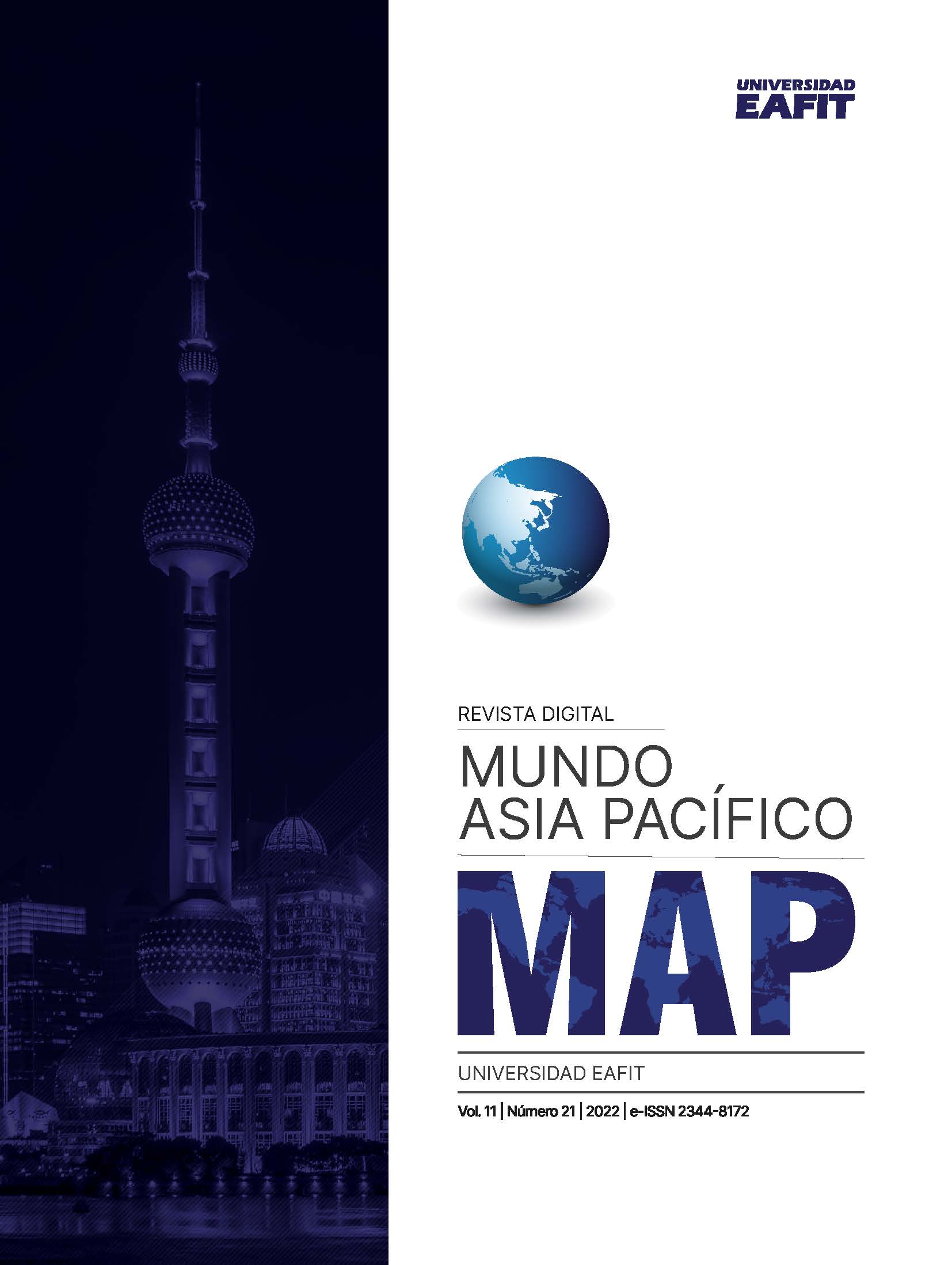Relaciones energéticas entre China y Kazajstán después de la Guerra Fría
Main Article Content
Keywords
Energía, Kazajstán, China, petróleo, gas natural
Resumen
La energía ha mantenido su importancia para la humanidad desde los períodos antiguos de la historia hasta el día de hoy. Esta importancia ha aumentado con la creciente dependencia del desarrollo industrial del uso de la energía. De hecho, el valor cargado en energía a lo largo del tiempo también se ha discutido con diferentes dimensiones. Al punto alcanzado hoy, la energía forma parte de la seguridad nacional. También es indiscutible que mantendrá esta posición en el futuro, como lo hizo ayer y hoy. El tema de la seguridad energética ahora se está considerando en la dimensión de seguridad nacional para todas las partes que necesitan o tienen este recurso. En este aspecto, no sólo es un tema de seguridad que preocupa a las naciones, sino también el foco de atención del sistema internacional. En este aspecto destaca la vertiente de la seguridad energética que conecta a los Estados en las relaciones internacionales. Nuestro estudio considera el concepto de seguridad energética a través de Kazajstán y China y enfatiza diferentes aspectos de este concepto dentro de los dos países. Las visiones y desafíos energéticos de los dos países se presentan en el marco del concepto de seguridad energética y se hace énfasis en el desarrollo de las relaciones.
Descargas
Referencias
APERC, (2007). A quest for energy security in the 21st century: resources and constraints, Retrieved from https://aperc.or.jp/file/2010/9/26/APERC_2007_A_Quest_for_Energy_Security.pdf
Aydın, M. (2005). Çin’in stratejik hesaplarında Orta Asya (Ed). M. Aydın. Küresel politikada Orta Asya-Avrasya üçlemesi-1 Ankara: Nobel Akademik Yayıncılık. pp. 69-100.
Batsaikhan U., & Dabrowski, M. (2017). Central Asia — twenty-five years after the breakup of the USSR, Russian Journal of Economics, Vol. 3, Issue 3,pp.296-320
Brzezinski, Z. (1997). The Grand Chessboard: American Primacy And Its Geostrategic Imperatives. Basic Books.
China Briefing Team, (2021). China and Central Asia: Bilateral Trade Relationships and Future Outlook, Retrieved from https://www.china-briefing.com/news/china-and-central-asia-bilateral-trade-relationships-and-future-outlook/
CIA World Factbook, (2021). Kazakistan, Retrieved from: https://www.cia.gov/the-world-factbook/countries/kazakhstan/
Chatzky, A. and Siripurapu, A. (2022). OPEC In A Changing World. Council On Foreign Relations, Retrieved From https://www.cfr.org/backgrounder/opec-changing-world
Çelikpala, M. (2014). Enerji Güvenliği NATO’nun Yeni Tehdit Algısı. Uluslararası İlişkiler Dergisi, 10(40), pp. 75-99.
Daojiong, Z. (2006). Global China's Energy Security: Domestic And International Issues, Politics and Strategy, 48(1), pp. 179-190.
David, R. R., (2022). Kazakhstan Energy Hub for China and Europe, Retrieved from https://energyindustryreview.com/marketplace/kazakhstan-energy-hub-for-china-and-europe/
Duan. Y. (2021). Bilateral Trade Between China And Kazakhstan: Challenges And Opportunities In The Context Of Belt And Road Initiative. Advances in Economics, Business and Management Research, Retrieved From https://www.atlantis-press.com/proceedings/icfied-21/125954321
EU Commision. (2000). Green Paper Towards a European Strategy for the Security of Energy Supply, Final Report, Retrieved from https://op.europa.eu/en/publication-detail/-/publication/0ef8d03f-7c54-41b6-ab89-6b93e61fd37c/language-en
EIA, (2019). Kazakhstan overvıew, Retrieved from https://www.eia.gov/international/overview/country/KAZ
EIA, (2020). China Overview, Retrieved from https://www.eia.gov/international/analysis/country/CHN
EY (2021) Kazakhstan oil and gas tax guide. Retrieved from: https://assets.ey.com/content/dam/ey-sites/ey-com/ru_kz/topics/oil-and-gas/ey-kazakhstan-oil-and-gas-tax-guide-2021.pdf
Flavin, C. and Dunn, S. (1999) A new energy paradigm for the 21st century. Journal of International Affairs. 53(1), pp. 167-190.
Golden P. B. (2011). Central Asia in World History. New York: Oxford University Press.
Gökbel, A. and Turganbayeva, T. (2021). Kazakistan’da Petrol, Doğalgaz ve Dış Politika: Rusya, Çin, ABD ve AB dengesi. Ahi Evran Üniversitesi İktisadi ve İdari Bilimler Fakültesi Dergisi, 5(1), pp. 1-28.
International Energy Charter, (2016). China’s Central Asia Gas Pipeline, Retrieved from https://www.energycharter.org/fileadmin/DocumentsMedia/Occasional/China-Central_Asia_Energy_Transit_Community.pdf
IEA, (2019). Energy Security, Retrieved from https://www.iea.org/topics/energy-security
IEA, (2020). Kazakhstan Energy Profile, Retrieved from https://www.iea.org/reports/kazakhstan-energy-profile
Jian. Z. (2011). Chına’s Energy Securıty: Prospects, Challenges, And Opportunıtıes. The Brookıngs Instıtutıon Center For Northeast Asıan
Polıcy Studıes. Massachusetts Retrieved from https://www.brookings.edu/wp-content/uploads/2016/06/07_china_energy_zhang_paper.pdf
Kalyuzhnova, Y., & Lee, J. (2014). China and Kazakhstan’s Oil and Gas Partnership at the Start of the Twenty-First Century. Emerging
Markets Finance & Trade, 50(5), pp. 206–221. Retrieved from http://www.jstor.org/stable/24475779
KCP, (2021). China-Kazakhstan Pipeline, Retrieved from https://www.kcp.kz/company/history
Karaca, K. (2012). Çin’in Değişen Enerji Stratejisinin Dış Politikasına Etkileri (1990-2010). Uluslararası İlişkiler Dergisi, 9(33), pp. 93-118.
Lattimore, O. (1950) Pivot of Asia: Sinkiang and the Inner Asian Frontiers of China and Russia. Boston: An Atlantic Monthly Press Book Little, Brown and Company.
Leung, G. C. K. (2011). China's Energy Security: Perception And Reality. Energy Policy, 39, pp. 1330-1337.
Liao, X. (2006). A Silk Road For Oil: Sino – Kazakh Energy Diplomacy. Journal Asia Pacific Business Review, 7(2), pp. 39-51.
Ministry of Foreign Affairs Republic of Kazakhstan, (2014). Foreign Policy Concept for 2014–2020 Republic of Kazakhstan, Retrieved from http://www.mfa.gov.kz/index.php/en/foreignpolicy/foreign-policy-concept-for-2014-2020-republic-of- kazakhstan
OEDC. (2020). “The impact of coronavirus (COVID-19) and the global oil price shock on the fiscal position of oil-exporting developing countries”. Retrieved from: https://www.oecd.org/coronavirus/policy-responses/the-impact-of-coronavirus-covid-19-and-the-global-oil-price-shock-on-the-fiscal-position-of-oil-exporting-developing-countries-8bafbd95/
Özel Özcan, M. S. (2020). Vladimir Putin Dönemi Rus Dış Politikasında Orta Asya (Ed). Fulya Köksoy, Küresel Politikalar Ve Bölgesel Dönüşümler, Ankara: Nobel Yayınları
Özel Özcan, M.S. (2021). İmparatorluk: Geçmişten Bugüne Büyük Güçler ve Rusya Örneği, Ankara: Orion Kitabevi
Palkin, S. E., (2012). An Energy Triangle China, Russia, And Kazakhstan. Russian Social Science Review, 53(4), pp. 80-94.
Riley, C ve Liakos, C. (2021). “Oil soars near $50 after OPEC and Russia agree to roll over production cuts”. Erişim: https://edition.cnn.com/2021/01/05/investing/opec-oil-production-russia-saudi/index.html
Ritchie H & Roser. M. (2020) - "Energy". Published online at OurWorldInData.org. Retrieved from: 'https://ourworldindata.org/energy'
Sempa (2020). , Francis P. Geopolitics: From the Cold War to the 21st Century, New Jersey, Transaction Publishers
Statista, 2021) Average annual OPEC crude oil price from 1960 to 2021”, Retrieved from: https://www.statista.com/statistics/262858/change-in-opec-crude-oil-prices-since-1960/
Strategy 2050, (2012). Kazakhstan 2050 Strategy, Retrieved from https://kazakhstan2050.com/
Srivastava, B. and Callahan Q. P. (2016). Energy security: today and tomorrow. Humanities & Social Sciences Reviews Journals, 4(3), pp. 59-67.
Ticaret Bakanlığı, (2020) Çin-Orta Asya Doğal Gaz Boru Hattı. Retrieved from https://ticaret.gov.tr/blog/ulkelerden-ticari-haberler/turkmenistan/cin-orta-asya-dogal-gaz-boru-hatti-2019-yilinda-47-9-milyar-metrekup-dogal-gaz-t
Turan, İ. (2020). Çin’in Enerji Güvenliği Politikası Kuşak Yol İnisiyatifi ve Avrasya’da “Yeni Büyük Oyun”. Ankara: Nobel Akademik Yayıncılık.
Yergin, D. (2006). Ensuring Energy Security. Foreign Affairs, 85(2), pp. 69-82.
World Energy Councıl (2020), Retrieved from https://www.worldenergy.org/publications/entry/world-energy-trilemma- index-2020

